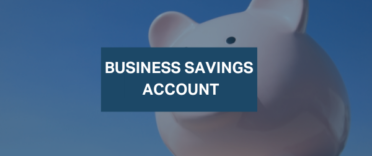Best savings account for £100,000

1 minute summary - Best savings account for £100k
- The Financial Services Compensation Scheme (FSCS) ensures that money held with a UK bank or building society is protected up to £85,000 (or £170,000 for a joint account). Some banks and building societies share a banking licence so you may only be covered for up to £85,000 across all the banking brands within the organisation.
- You can save up to £20,000 into a Cash ISA each year and any interest you earn is not liable to tax.
- Consider using a Cash Savings Platform like Hargreaves Lansdown's Active Savings platform*. These services allow you to access the best savings rates from multiple banks, all through one online account.
Step 1 – Understanding the Financial Services Compensation Scheme (FSCS)
Any money you invest with a UK bank or building society is protected up to £85,000 (£170,000 on joint accounts) under the Financial Services Compensation Scheme. The scheme covers you for up to £85,000 in each account where you are invested providing the bank or building society has their own banking authorisation. Some banks and building societies are part of a bigger organisation and share their banking authorisation with other brands in the organisation. In cases where this happens, you will only be covered for up to £85,000 across all the banking brands within the organisation.
So, when looking for the best savings account for your £100,000, bear in mind that you will actually need to use two or more accounts with institutions with their own banking licence to be fully covered by the FSCS. Alternatively, you could simply open a joint account with your partner and your £100,000 would be fully protected. Of course, your partner would be able to access the money without your authorisation.
Don't forget that you need to take into account any existing savings account you have with each institution to ensure your £100k is fully covered under the FSCS.
Step 2 – Use your Cash ISA allowance first
Don't forget you can invest up to £20,000 (2024/25) annually in an ISA and receive your interest tax-free. By contrast, interest earned from ordinary savings accounts is taxable, although up to £1,000 per tax year can be tax-free under your personal savings allowance. So look to see if the rates available on an ISA beat the net rate you'd get from ordinary savings accounts. Obviously, you can only put £20,000 of your £100,000 into a cash ISA each tax year, although your partner could use their cash ISA allowance as well. To find out the best ISA rates currently available, just click on the following links.
Get 4.68% (AER Variable) with the Plum Cash ISA
Earn 4.68% (AER Variable) with the Plum Cash ISA
- Easy Access Cash ISA
- Rate includes a Plum Bonus of 0.88% AER (variable)
- T&Cs and eligibility criteria apply
- Plum account required

Step 3 – Decide how long you want to lock away your cash
The longer you are prepared to leave your £100,000 in a savings account then the higher the rate of interest you will receive. These longer-term savings accounts are generally referred to as ‘savings bonds' and are typically for a 1, 3 or 5-year term with the interest rate fixed at the start of the term. Access to your £100k is normally still available within the chosen term but you could lose some or all of your accumulated interest if you exceed the withdrawal limits stated. Another alternative is to put your cash into a ‘notice account' where you have to give notice for any withdrawals (typically 60, 90 or 120 days), you will receive an enhanced rate of interest on these savings accounts.
Check out our regularly updated ‘Best savings accounts in the UK‘ article for a round-up of the best savings rates.
Alternatively, take a look at the accounts available below and compare the returns available to find the best fit for your circumstances.
Step 4 – Don't forget Current Accounts pay interest too
We often look at current accounts in terms of ATMs and Direct Debits without realising that you can get high levels of interest on some current accounts which is worth checking out. If you click on the link below it will show you the best interest-paying current accounts. However you won't receive the top rate of interest on the full £100,000.
Step 5 – Check the bonus rates and terms
Many savings accounts advertise a headline rate that looks very appealing but in the small print, it states that the interest rate will be reduced after a period of time (typically 6 months or 1 year). There is no reason why you shouldn't take advantage of these rates but make sure you note in your diary the date that the ‘bonus rate' ends. Then when this rate ends you can shop around for a better rate that may be available at the time. Also do check the maximum amount allowed in your chosen savings account as some have limits below £100,000.
Step 6 – Use a cash savings platform
A cash savings platform is an online savings hub that gives you access to a wide range of savings products from banks and building societies via a single website login. Once registered, you can move money between savings accounts from a range of banks and building societies with the click of a button. There is no need to manually open accounts online or in-brach with the different institutions and all the admin is taken care of. These savings platforms can offer market-leading rates meaning they can be the simplest way to maximise the interest earned on your savings. Read our round-up of the best cash savings platforms in the UK which includes the market-leading Hargreaves Lansdown Active Savings* platform. You can read more in our independent Hargreaves Lansdown Active Savings review. Alternatively, check out our independent review of savings platform Raisin.
Step 7 – Be cautious about Peer-to-Peer lending
Peer-to-Peer lending means lending money to individuals, or “peers”, without going through a traditional financial intermediary such as a bank or other financial institution. They work by matching individual lenders and borrowers online which usually means better interest rates for savers than traditional savings accounts with a bank. Traditional banks take savers' money, pay interest, and then lend it to other customers in the form of loans at a higher interest rate, keeping the difference as profit. Peer-to-peer savings accounts aim to cut out this middleman for the benefit of savers and borrowers. You do need to be aware, however, that currently Peer-to-Peer lending is not covered by the Financial Service Compensation Scheme. Peer-to-Peer lending should be approached with caution (and avoided by most), especially during an economic downturn as more people are likely to default on their loans, meaning you could lose your money. It is worth noting that two of the biggest peer-to-peer lenders – Ratesetter and Zopa have withdrawn from the market and only a handful of niche companies remain.
Step 8 – How to always ensure you get the best savings rate on £100k
- Sign up to the FREE email tracker alert tool that I have used for a number of years. You simply enter your email address and the name of your current savings accounts. Then the service will not only tell you if you could get a better rate now, but will also continuously monitor the market and send you an email if better rates come available. When you use this tool make sure you enter the correct amount invested for each account as this can affect the interest rates available.
- I highly recommend you read our 7 must-know rules of saving large sums. It contains advice on how to get the best interest rates on your money and how to protect your savings from the eventuality that your bank or building society goes bust. To get the best interest rate for savings over £50k, check out our guide ‘Get the best interest on savings over £50,000‘.
If a link has an * beside it this means that it is an affiliated link. If you go via the link, Money to the Masses may receive a small fee which helps keep Money to the Masses free to use. The following link can be used if you do not wish to help Money to the Masses or take advantage of any exclusive offers – Hargreaves Lansdown, Raisin






